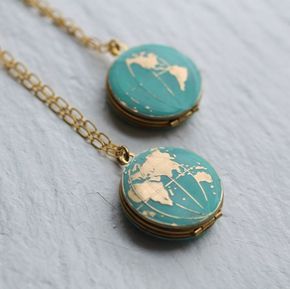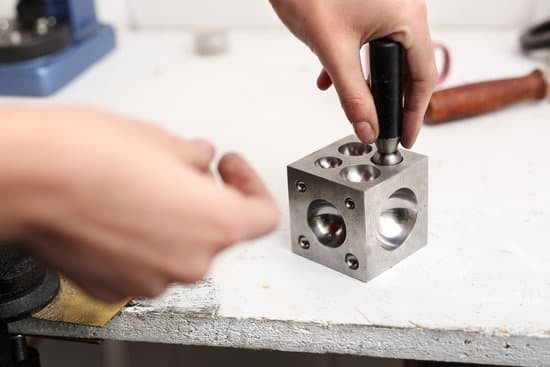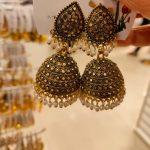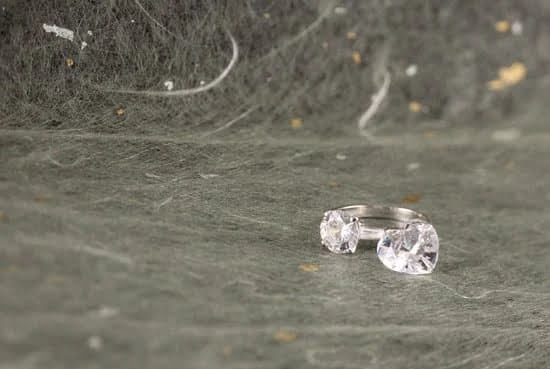Beaded jewelry is a beautiful and intricate art form that allows individuals to express their creativity and personal style. One essential aspect of creating beaded jewelry is attaching clasps securely to ensure longevity and functionality. In this article, we will explore the importance of properly attaching clasps to beaded jewelry and provide step-by-step instructions on how to achieve a secure connection.
Attaching clasps to beaded jewelry is crucial for several reasons. First and foremost, it ensures the durability and longevity of your piece. When clasps are not securely attached, they can easily come undone, leading to potential loss or damage to your precious creations. Additionally, properly attached clasps enhance the overall functionality of your jewelry, allowing you to wear them with ease and confidence without the fear of them slipping off unexpectedly.
Understanding different types of clasps is essential for choosing the right one for your specific beaded design. From lobster clasps to toggle clasps, magnetic clasps to box clasps, there are numerous options available in the world of beading. Each clasp type has its unique features and advantages, making it important for aspiring jewelry makers to have a comprehensive overview of these various options.
With a solid understanding of why properly attaching clasps is crucial for your beaded jewelry’s integrity and functionality, let’s move on to the next section where we explore different types of clasps commonly used in this craft. Understanding these clasp types will provide you with valuable insight into which ones best suit your design needs.
So gather your materials and get ready to embark on an exciting journey into the world of adorning your beaded masterpieces with secure and stylish clasps.
Understanding Different Types of Clasps
Understanding the different types of clasps commonly used in beaded jewelry is essential for properly attaching them to your creations. There are several types of clasps available, each with its own unique features and purposes. By familiarizing yourself with these different clasps, you can choose the one that best suits your design and functionality needs.
One popular type of clasp is the lobster clasp, which features a secure spring-loaded mechanism that opens and closes easily. Lobster clasps are commonly used in necklaces and bracelets due to their reliability and ease of use. Another common clasp option is the toggle clasp, which consists of a bar that fits through a ring or loop to secure the piece of jewelry. Toggle clasps are often chosen for their aesthetic appeal and versatility.
In addition to lobster and toggle clasps, there are also hook-and-eye clasps, box clasps, magnetic clasps, and slide lock clasps, among others. Each type has its own specific advantages and considerations when it comes to attaching them to beaded jewelry. It’s important to carefully assess your design goals and the intended use of your finished piece when selecting a clasp.
Types of Clasps Commonly Used in Beaded Jewelry
| Clasp Type | Description |
|---|---|
| Lobster Clasp | A spring-loaded clasp that opens and closes using a small lever mechanism. |
| Toggle Clasp | A two-part clasp consisting of a bar that fits through a loop or ring to secure the jewelry. |
| Hook-and-Eye Clasp | A clasp that features a hook on one end and a loop or eye on the other. |
| Box Clasp | A clasp that consists of a box-shaped component with a small latch or hinge for closure. |
| Magnetic Clasp | A clasp that uses magnets to hold the jewelry securely together. |
Preparing Your Beaded Jewelry
Once you have gathered all the necessary tools and materials for attaching clasps to your beaded jewelry, it’s important to properly prepare your jewelry before beginning the attachment process. This step ensures a secure connection and prevents any damage to your precious creations. In this section, we will provide you with step-by-step instructions on how to prepare your beaded jewelry for attaching clasps, as well as tips on identifying the ideal attachment points.
1. Clean and Inspect Your Jewelry:
Before attaching a clasp, it’s crucial to make sure that your beaded jewelry is clean and free from any dirt or residue. Gently wipe down your jewelry using a soft cloth or a mild cleaning solution specifically designed for beads. Once your beads are clean, inspect them carefully for any loose threads, frayed wire, or damaged beads. If you come across any issues, take the time to repair or replace them before proceeding with attaching the clasp.
2. Determine the Attachment Points:
Identifying the ideal attachment points on your beaded jewelry is essential for achieving a secure connection between the beads and clasps. Take a closer look at your design and consider factors such as symmetry, balance, and wearability. Depending on the type of jewelry you’re working on (bracelet, necklace, etc.), you may choose different attachment points accordingly. For example, bracelets usually require multiple strands of beads connected to one clasp near each end of the bracelet for added durability.
3. Prepare Your Beads:
Before attaching clasps, it’s helpful to arrange your beads in order and keep track of their placement within your design. This will prevent any confusion or mistakes during the attachment process. If necessary, use temporary string or wire to hold your beads together while you work through each step.
4. Stringing or Weaving Techniques:
Once you have identified the attachment points and arranged your beads, you’ll need to determine the appropriate stringing or weaving technique for your design. Common techniques include using beading wire, thread, cord, or elastic. Consider the weight of your beads and the intended durability of your jewelry when selecting a suitable technique.
By following these step-by-step instructions for preparing your beaded jewelry for attaching clasps, you will set yourself up for success in creating beautiful and secure designs. Taking the time to properly clean and inspect your jewelry, identify ideal attachment points, and prepare your beads will ensure that your finished pieces are both stunning and durable. In the next section, we will explore the tools and materials required for attaching clasps to beaded jewelry.
Tools and Materials
When it comes to attaching clasps to beaded jewelry, having the right tools and materials on hand is essential. Not only will they make the process easier and more efficient, but they will also ensure a secure and professional-looking attachment. Here is a detailed list of the essential tools and materials that you will need:
- Crimp beads: These small metal beads are used to secure the ends of your beading wire or stringing material to the clasp. They come in various sizes and finishes, so make sure to choose ones that are appropriate for your project.
- Wire cutters: These specialized cutters are designed for cutting through beading wire or stringing material cleanly and easily. Look for a pair with sharp blades that can make precise cuts without fraying or damaging the wire.
- Jewelry pliers: There are several types of jewelry pliers that can be helpful when attaching clasps. Round-nose pliers are used for making loops and bending wire, chain-nose pliers have flat tips for gripping small objects, and crimping pliers have special notches for securely closing crimp beads.
- Clasps: Choose clasps that complement your design and are appropriate for the weight and style of your beaded jewelry. Common types of clasps include lobster claws, spring rings, toggle clasps, magnetic clasps, and hook-and-eye closures.
- Beads or spacers (optional): Depending on your design, you may want to incorporate beads or spacers between your beaded sections and clasps. These can add visual interest and help create a more balanced look.
- Beading mat or tray: A beading mat or tray is useful for keeping your beads organized and preventing them from rolling away while you work. It provides a non-slip surface that makes it easier to handle small components.
Having these tools and materials readily available will make it much easier for you to attach clasps to your beaded jewelry. It’s also a good idea to have some extra clasps, crimp beads, and wire on hand in case you make any mistakes or need to make adjustments. With the right tools and materials, you’ll be able to achieve professional-looking results and enjoy the satisfaction of creating beautiful beaded jewelry.
| Tools | Materials |
|---|---|
| Crimp beads | Beads or spacers (optional) |
| Wire cutters | Clasps |
| Jewelry pliers (round-nose, chain-nose, crimping) | Beading mat or tray |
How to Attach Clasps Using Crimp Beads
How to Attach Clasps Using Crimp Beads: A detailed tutorial on how to attach clasps using crimp beads, including a step-by-step demonstration and tips for achieving a secure connection
Attaching clasps using crimp beads is a popular and effective method for securing clasps onto beaded jewelry. Crimp beads are small metal beads that can be flattened to create a secure connection between the clasp and the beading wire. In this tutorial, we will guide you through the process of attaching clasps using crimp beads, providing you with a step-by-step demonstration and useful tips for achieving a strong and durable connection.
Before you begin attaching your clasp using crimp beads, make sure you have all the necessary tools and materials ready. Here is a list of what you’ll need:
- Crimp beads: Choose crimp beads that are appropriate for the thickness of your beading wire.
- Beading wire: Select a flexible and sturdy beading wire that suits your design.
- Wire cutters: These will be used to trim excess wire at the end.
- Jewelry pliers: Round-nose pliers or chain-nose pliers are ideal for manipulating crimp beads.
- Clasp: Choose a clasp that complements your design and fits securely.
Now let’s move on to the step-by-step process of attaching clasps using crimp beads:
- Thread your beading wire through one end of the clasp. Leave about an inch of wire sticking out.
- String on one crimp bead, then send the end of the wire back through the crimp bead in the opposite direction. Make sure there is no slack in the wire.
- Use your pliers to flatten the crimp bead tightly against the clasp. This will ensure a secure connection.
- Trim off any excess wire close to the flattened crimp bead using wire cutters.
- To create a professional and neat finish, you can use a crimp cover bead. Simply slide the crimp cover over the flattened crimp bead and gently close it with pliers.
- Repeat the above steps on the other end of your beaded jewelry, making sure to leave enough room to easily attach and detach the clasp.
By following these steps and using proper techniques, you can confidently attach clasps to your beaded jewelry using crimp beads. Remember to practice on spare materials before working on your actual project to ensure you have mastered the process for achieving a secure connection.
How to Attach Clasps Using Jump Rings
Jump rings are a popular alternative to crimp beads for attaching clasps to beaded jewelry. They are small metal rings that can be opened and closed using jewelry pliers. Jump rings come in various sizes, materials, and finishes, giving you options to match your design aesthetic.
To attach clasps using jump rings, start by selecting the appropriate size of jump ring for your clasp and beads. The jump ring should fit comfortably through the hole of both the clasp and the last bead on your jewelry piece.
- Open the jump ring: Hold one side of the jump ring with one pair of jewelry pliers, and hold the other side of the jump ring with another pair of pliers. Gently twist one side towards you while pushing the other side away from you, creating an opening in the jump ring.
- Thread on the clasp: Slide your chosen clasp onto the open jump ring, making sure it is centered on the ring.
- Attach to the jewelry piece: Slide one end of your beaded jewelry onto the open jump ring as well, ensuring it is positioned properly next to the clasp.
- Close the jump ring: Using your pliers, grip one side of the opening and gently twist it back into place until both sides meet seamlessly. Make sure there are no gaps or spaces between them to ensure a secure connection.
It’s important to note that when using jump rings, it’s crucial to close them securely so that they don’t easily pull apart. This can be achieved by making sure both ends are aligned perfectly without any gaps or openings through which beads or threads could slip out.
Remember to handle jump rings delicately because excessive force can distort their shape or weaken their integrity. As you become more proficient with this method, you can explore different ways to incorporate multiple jump rings in your designs for added style and functionality.
By following these step-by-step instructions and using the proper tools, you can confidently attach clasps to your beaded jewelry using jump rings.
Adding a Clasp to a Beaded Bracelet
Choosing the Right Clasp for Your Beaded Bracelet
When it comes to adding a clasp to a beaded bracelet, there are several factors to consider. The first step is choosing the right clasp that not only complements the design of your bracelet but also provides functionality and security. There are various options available, including lobster clasps, toggle clasps, magnetic clasps, and slide lock clasps.
Lobster clasps are widely used due to their versatility and reliability. They feature a small spring-loaded lever that opens and closes the clasp securely. Toggle clasps consist of a bar and loop mechanism, where the bar is inserted into the loop to form a closure.
Magnetic clasps are convenient to use as they snap together easily, but they may not be suitable for bracelets with heavy beads or excessive movement. Slide lock clasps have a sliding mechanism that locks the clasp in place when pulled. Consider the weight, size, and style of your bracelet when choosing the clasp.
Attaching a Clasp to a Beaded Bracelet
Once you have selected the appropriate clasp for your beaded bracelet, it’s time to attach it securely. Begin by identifying where you want your clasp to be placed on your bracelet. Ideally, this would be near one end of your beadwork so that it can easily fasten around your wrist. If you have designed your bracelet without any specific attachment points in mind, determine which area works best aesthetically while ensuring ease of wear.
To attach the clasp using crimp beads, thread both ends of your bracelet through one crimp bead followed by one jump ring or split ring depending on the type of clasp you’re using. Thread both ends back through the crimp bead in opposite directions and slide it close to the jump ring or split ring.
Use crimp pliers to flatten the crimp bead, securing it in place. Trim any excess wire and close the jump ring or split ring with jewelry pliers.
If you prefer to attach the clasp using jump rings, simply open one jump ring with jewelry pliers and thread both ends of your bracelet through it. Then, attach the clasp to the jump ring before closing it securely. Be sure to check that the clasp is properly aligned and firmly closed before wearing.
Considerations for Stretchy Bracelets
For stretchy bracelets made with elastic cord, attaching a traditional clasp may not be necessary. Instead, consider adding a knot or toggle directly onto the bracelet for closure. Alternatively, you can incorporate a small loop of beading wire at each end of your bracelet when stringing the beads. This loop will provide an attachment point for a conventional clasp if desired.
By following these techniques and considering the unique challenges posed by beaded bracelets, you can confidently attach clasps that are both secure and visually appealing. Remember to take your time and practice on spare materials before working on your actual jewelry piece. With patience and attention to detail, you’ll be able to add clasps to your beaded bracelets with ease and create stunning wearable art pieces.
Troubleshooting and Common Mistakes
When attaching clasps to beaded jewelry, it’s important to be aware of common mistakes that can occur during the process. By understanding these potential pitfalls and learning how to troubleshoot them, you can avoid potential issues and ensure a secure connection between the clasp and your jewelry piece.
One common mistake when attaching clasps is not properly securing the crimp beads. Crimp beads are typically used to create a secure connection between the clasp and the jewelry wire. However, if they are not properly crimped, they may become loose over time and cause the clasp to come undone.
To avoid this, make sure to use quality crimp beads that are appropriate for your wire thickness. Additionally, always use proper crimping tools and follow the manufacturer’s instructions for correct usage.
Another mistake that often occurs is using inadequate jump rings or connectors. Jump rings are commonly used as connectors between the clasp and the beaded jewelry. It is crucial to choose jump rings that are strong enough to hold the weight of your jewelry piece without easily opening or breaking.
When selecting jump rings, opt for ones with a thicker gauge and ensure they are securely closed using jewelry pliers. Additionally, check for any signs of weakness or wear on existing jump rings before using them in your design.
If you encounter issues with coiling or closing jump rings properly, there are solutions available. One option is to invest in high-quality jewelry pliers specifically designed for manipulating jump rings. These tools often have two different sides – one for opening and closing jump rings and another for coiling or twisting them into shape. Taking time to practice using these pliers can greatly improve your ability to create secure connections with jump rings.
Final Touches and Additional Considerations
Once you have successfully attached your clasps to your beaded jewelry, there are various ways you can add some extra flair and personalization to your creations. Here are a few tips and tricks for those final touches:
- Extender Chains: Adding an extender chain to your beaded jewelry can provide versatility in terms of length. This is especially beneficial for bracelets or necklaces that need to fit different wrist sizes or neckline styles.
To add an extender chain, simply attach one end of the chain to the last jump ring on one side of the clasp, and attach the other end of the chain to the last jump ring on the opposite side of the clasp. This will allow the wearer to adjust the length easily. - Decorative Elements: You can also incorporate decorative elements into your clasps themselves for added visual interest. For example, you can use small charms or beads that complement the overall design of your jewelry piece. To do this, simply slide these decorative elements onto a headpin or eye pin, create a loop at one end using round-nose pliers, and then attach it to one side of the clasp using jump rings or wire wrapping techniques.
- Using Different Types of Clasps: Experimenting with different types of clasps can also enhance the overall aesthetic appeal of your beaded jewelry. From lobster clasps to toggle clasps and magnetic clasps, there is a wide variety available on the market. Consider choosing a clasp that not only complements your design but also provides ease-of-use for the wearer.
By focusing on these final touches and additional considerations, you can elevate your beaded jewelry creations from ordinary to extraordinary. Remember to give careful thought to extending chains and incorporating decorative elements, as well as selecting the right type of clasp for your design. These small details can make a big difference in the overall appearance and functionality of your finished piece.
Conclusion
In conclusion, properly attaching clasps to beaded jewelry is essential for creating secure and functional pieces. Throughout this blog post, we have explored the different types of clasps commonly used in beaded jewelry and provided step-by-step instructions on how to attach them using both crimp beads and jump rings. We have also discussed specific techniques for attaching clasps to beaded bracelets, as well as troubleshooting common mistakes and providing tips for achieving a secure connection.
It is important to remember that the key to successful clasp attachment lies in proper preparation and the use of the right tools and materials. Taking the time to identify the ideal attachment points on your beaded jewelry, gathering the necessary tools such as wire cutters and jewelry pliers, and ensuring you have an adequate supply of crimp beads or jump rings will set you up for success.
By following the detailed instructions provided in this blog post and considering the unique challenges that may arise when attaching clasps to beaded bracelets, readers can confidently create their own beautiful pieces of beaded jewelry. It is important to stay patient throughout the process, as practice makes perfect when it comes to mastering these techniques.

Welcome to my jewelry blog! My name is Sarah and I am the owner of this blog.
I love making jewelry and sharing my creations with others.
So whether you’re someone who loves wearing jewelry yourself or simply enjoys learning about it, be sure to check out my blog for insightful posts on everything related to this exciting topic!





